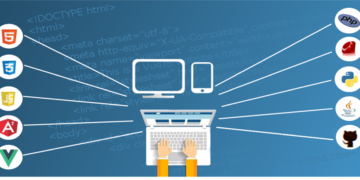The emergence of digital technology has brought about significant changes in business operations. The use of paper has been drastically reduced, even receipts are going digital.
Similarly, digital signage has also come up in a big way as it provides organizations and event planners with a unique means of displaying meaningful content and interactively engaging with potential customers.
Digital signage is the latest buzz while traditional static signboards are dying out. It is a popular choice due to its high return on investment and flexibility. There are many custom software development companies available in the market when you are trying to create a digital signage content management system. However, finding the right fit for an organization with diverse needs can be a real challenge.
Features Of Open-Source Digital Signage Software
If you’ve decided to transition from static to digital, you need to do a lot of research before getting an open-source digital signage system. Here is a list of key features to look for in digital signage software:
Content Management
Digital signage software will categorize and manage your content as per your parameters and convenience. All advanced software ensures the best utilization of resources.
To get maximum usage, you need to distribute content and related work accordingly. Digital signage tool ensures that these tasks are automated according to user-defined parameters.
Device Management
Device management is essential when a task depends on the use of multiple devices at the same time. Digital signage software controls devices in a very efficient way so, that you get the most out of them while using the least amount of resources.
Digital signage tools can manage multiple devices, whether they are convenient devices such as tablets, or cell phones to large displays such as LED screens and boards.
Support For Soft Signage
This software is a building block for 3D printing and retailers. The 3D printing feature helps create 3D models while using a set of basic shapes. It allows users to access a library of countless shapes and lets them view the shapes that suit them.
Soft signage which is a digital textile printing refers to material graphics pushed into a frame. Typically, these frames were made of acrylic, wood, metal elements, or steel. For a 3D printing frame, you must have the ability to finish it off with lights for a more unique look.
Content Scheduling
A key factor that distinguishes digital from uniform signage is that it easily automates the scheduling of content exposure. Its main objective is to convey the right message at the right time to the right person. Digital signage software default rules allow users to deliver dynamic content automatically and skip out-of-date content so playback stays up-to-date.
These types of rule-based scheduling significantly reduce workload. In addition, effective digital signage software gives the option to multiple scheduling for different displays or groups of screens.
A Commercial-grade Display
Commercial-grade displays offer better results than consumer-grade screens. It can offer additional inputs for external devices such as HDMI or VGA inputs. In addition, commercial-grade displays offer the durability necessary for displays operating for 12-15 hours per day.
Media Player
Touch Screen Digital signage software is used to stream, cast, or project media formats onto screens of all shapes and sizes. These days, videos and images are available in various formats and digital signage content management system tools can stream them in their current formats.
Product Placement
This feature of digital signage software is very important for sales and service organizations. A digital signage content management system can very effectively put your products and services in front of potential customers and target people.
Promotion and projection of your products are essential for sales businesses such as retail stores and restaurants. Menus and discount features are commonly endorsed features in restaurants and retail stores.
This helps in attracting more potential clients and even clients within the establishment get all the necessary information.
Conclusion
All the features of digital signage software mentioned in the blog are very useful when you are managing small to medium-level businesses that have medium workloads and don’t stream a lot of content.
Digital signage has also become an important element in general service announcements and general service. When your disposal has a variety of devices at your disposal it becomes tough to manage them because different devices have different needs.
A digital signage content management system solves all these problems and provides seamless inclusion from one device to another device and from one platform to another platform.
Almost all digital signage system tools are cloud-based, providing a protective working environment for your venture, without the risk of losing your data and content.
Also, visit: register a company in HK




































